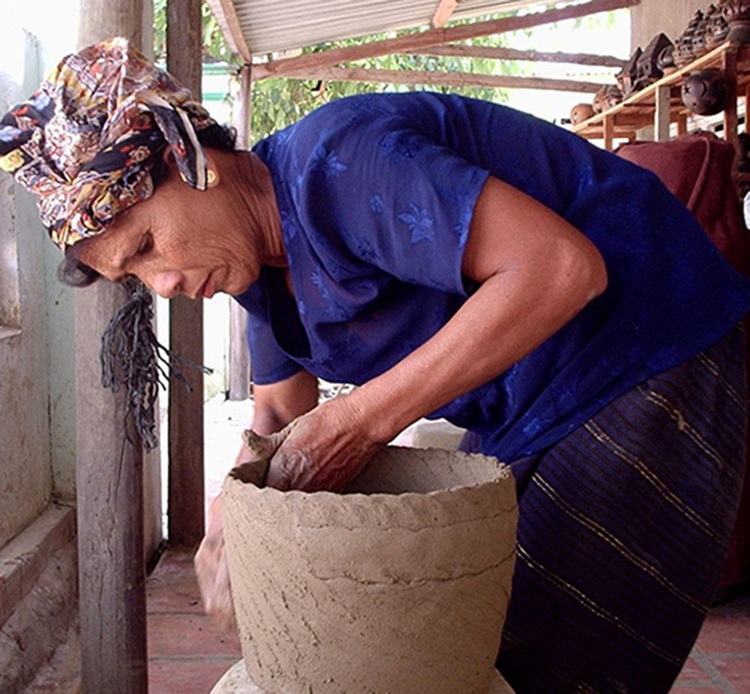
Two villages in separate provinces in south-central Vietnam are still making pottery the way their ancestors have been doing for generations, refusing to let commercialism and mass production derail their hopes of bringing their ancient craft back from the brink of extinction.
The skilled artisans of Bau Truc Village in Ninh Thuan Province and Tri Duc Village in Binh Thuan Province meticulously craft each piece of pottery they produce in the exact same way that generations of Cham people have doing for centuries.
The pottery making is unique tradition in Cham culture, one of Vietnam’s 54 ethnic minorities. Its technique involves artisans shaping their wares by hand, rather than with a potter's wheel, and using simple tools or shells to decorate each piece.
A potter's wheel is a spinning disk used to shape and decorate round ceramic ware in a way that helps ensure symmetry throughout. Creating a perfectly crafted piece without a potter’s wheel is extremely difficult, even for talented potters.
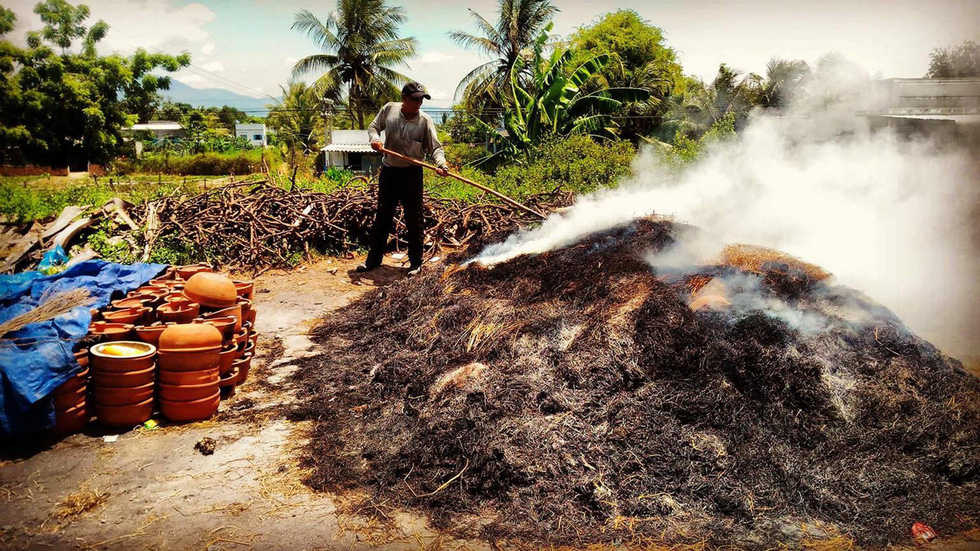 |
| A man cooks pottery outdoors, one of the most primitive ways to bake pottery, at Bau Truc Village in Ninh Thuan, south-central Vietnam. Photo: Xuan Huy / Tuoi Tre |
After a Cham artisan crafts a piece, it is then dried under the sun from four to six hours before being baked in straw- or wood-fired kiln.
Because every product is handmade, no two pieces are the same, resulting in extremely unique pieces highly valued by international buyers.
In order to protect the pottery making tradition in the region, the administration of Ninh Thuan Province recently suggested that Vietnam’s Ministry of Culture, Sports and Tourism seek UNESCO recognition for the craft as an intangible cultural heritage in need of urgent safeguarding.
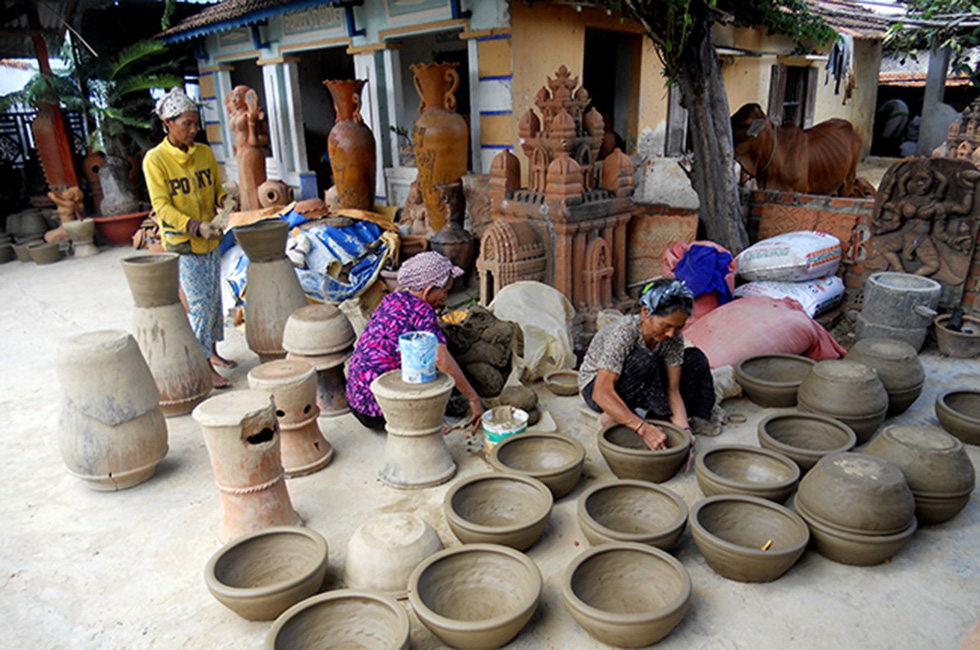 |
| Cham pottery products before being dyed. Photo: Xuan Huy / Tuoi Tre |
Traditional form of art
Cham pottery is typically designed for kitchen use, such as cooking rice, making soup, or holding water.
Despite being a time-consuming process, the piece is extremely fragile and it is rare for a Cham pot to be used for more than a year.
But despite the difficulties, the craftsmen of Bau Truc and Tri Duc Villages insist on carrying out the entire process by hand – from manually digging clay to individually shaping each piece.
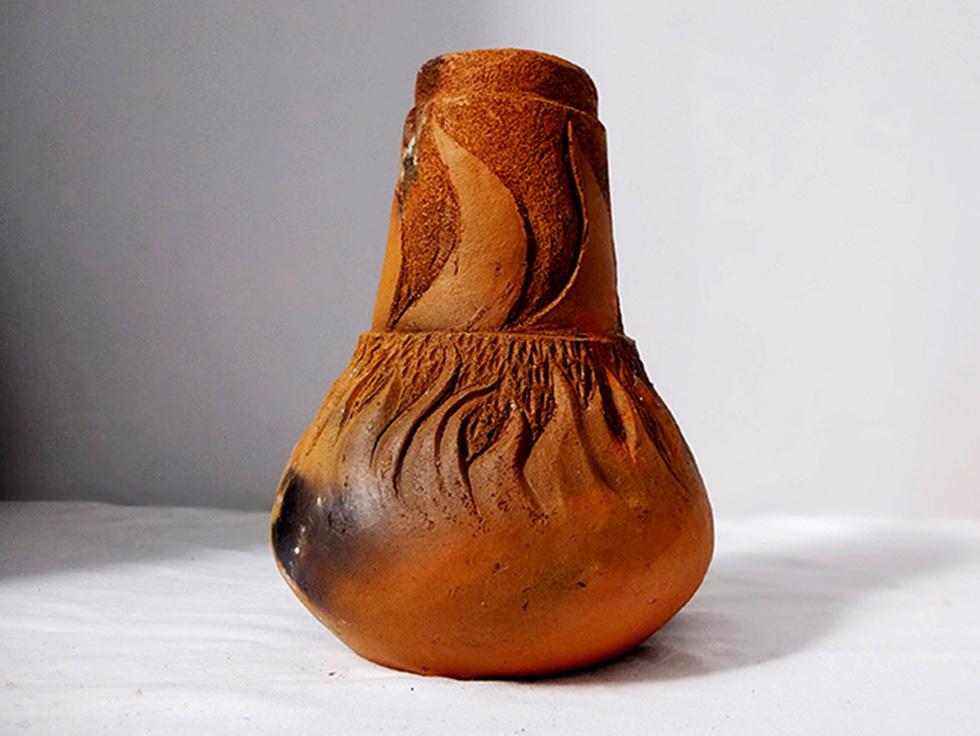 |
|
Cham pottery products before being dyed. Photo: Xuan Huy / Tuoi Tre |
The soil used to make Cham clay typically comes from the Quao River, near Bau Truc. After it’s collected, it is dried under the sun, cleaned, and placed in a deep hole filled with water. It is then left in the hole for one day before being taken out and mixed with sand to make clay.
Once the clay has been made and the piece has been crafted, the artisans began carving decorative designs into each pot.
After being taken out of the oven, various liquids are poured over the pottery to naturally dye the product.
Since all of the pottery produced in Bau Truc village is handmade, each piece’s flaws and imperfections are seen as unique.
Here are some of the thousands of pieces on display in Bau Truc Village:
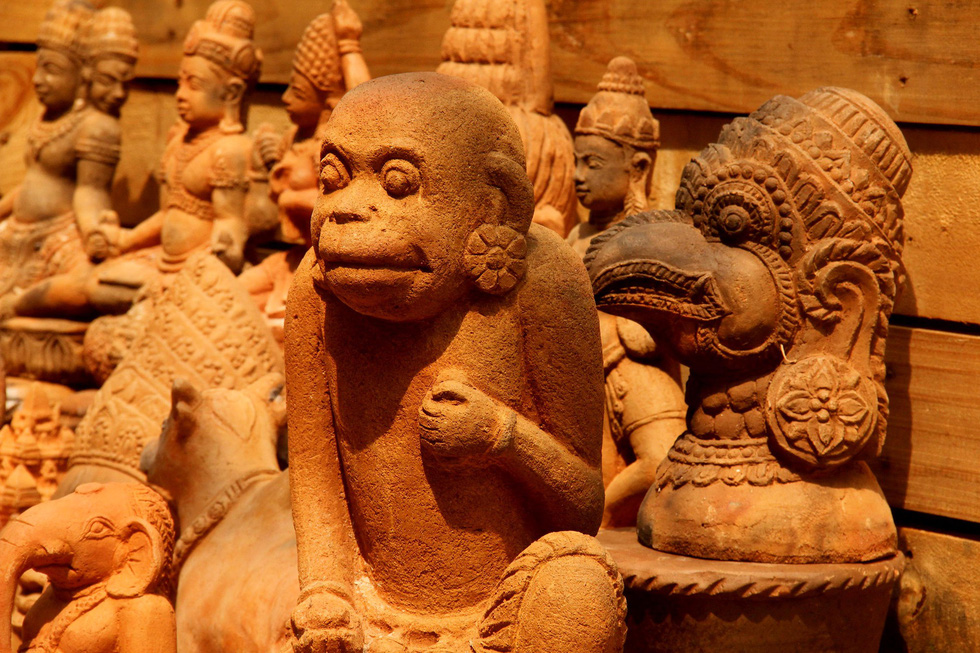 |
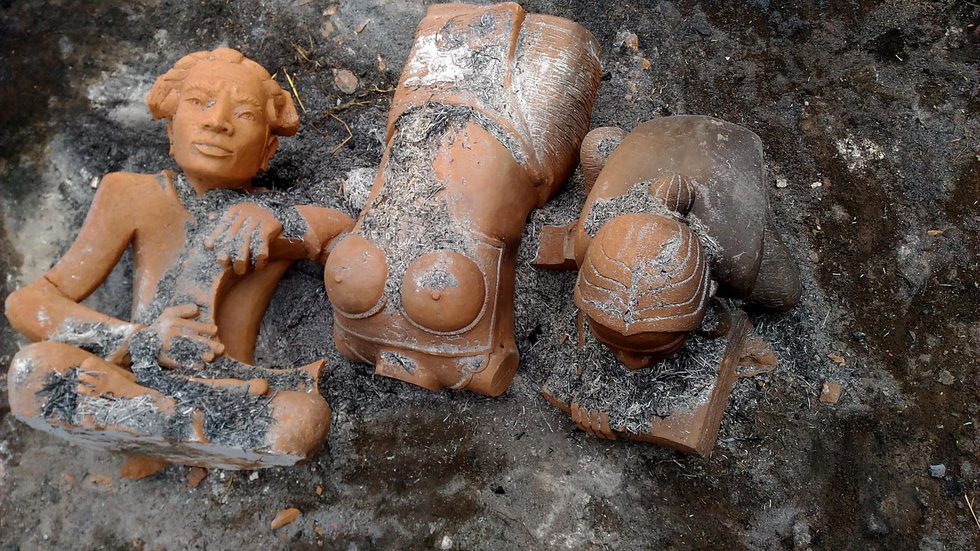 |
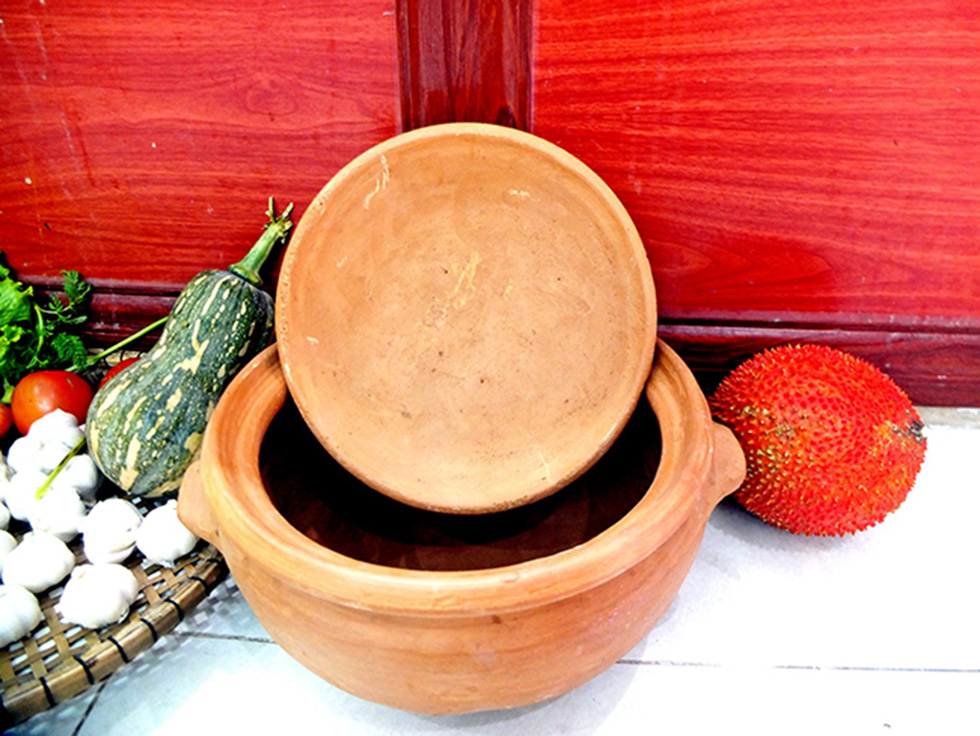 |
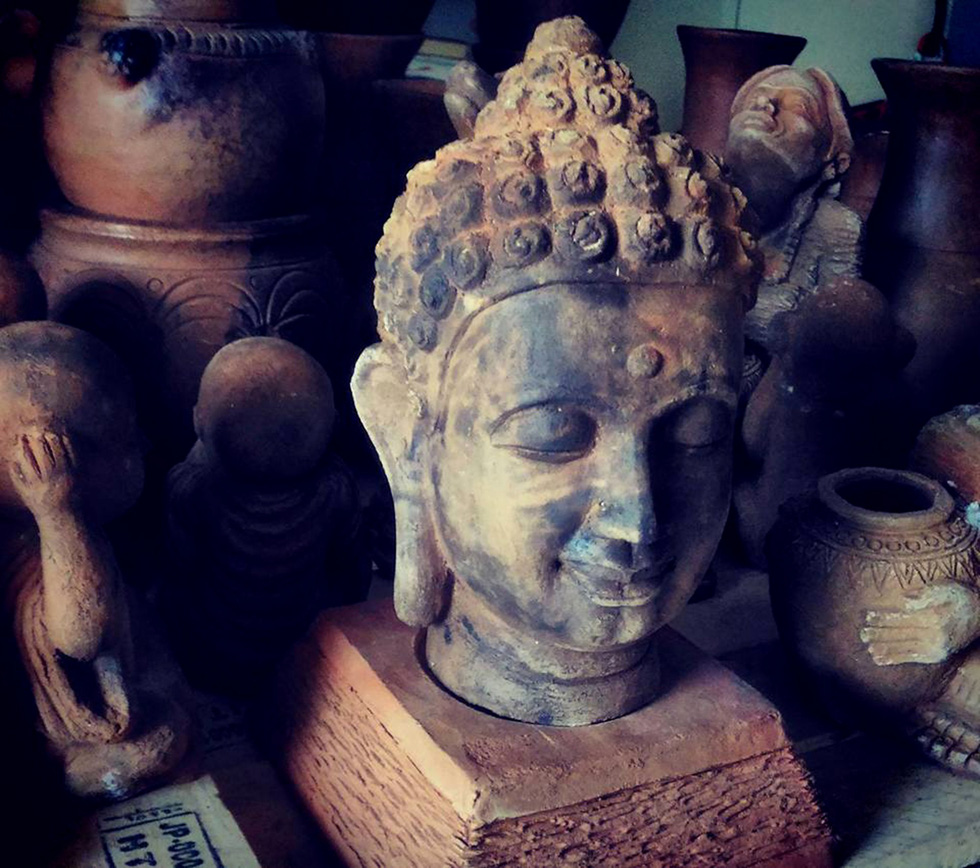 |
Like us on Facebook or follow us on Twitter to get the latest news about Vietnam!


Max: 1500 characters
There are no comments yet. Be the first to comment.